#anthropos
Photo
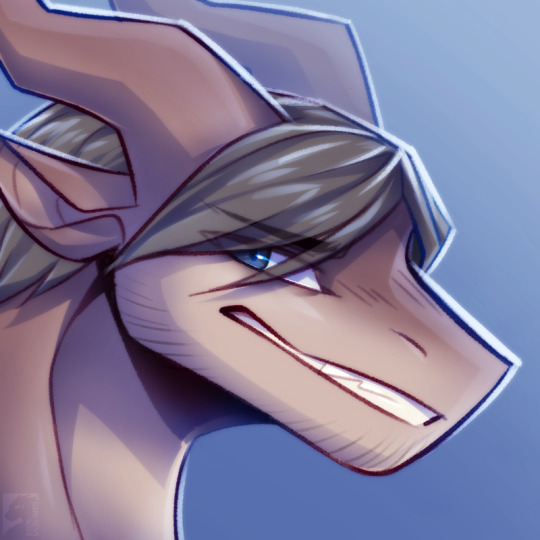

If you recognize them you get uhh ... a cookie? Yeah a cookie
2 icons done for @hollowallo!
22 notes
·
View notes
Text

In most versions of the Sophia mythos the fall of the Goddess is intimately linked to the activity of another Aeon, Christos, also named for its flow-signature, "anointing power." In cosmic terms anointing is the capacity of an Aeon to morph from a porous, foamlike state into a fluidic, dewlike state. Foam is not dew, but imagine foam turning to dew. That is anointing in the Pleromic domain. The product of anointing, chrism, is the love sweat of the gods. In the ecstasy of their dancing the Aeons break into a fragrant sweat, a bright, dewy eruption. This is anointing at the cosmic level.

Astrophysicists now accept the presence of "molecular dew" in the galactic arms though not yet at the galactic core, and they are reticent to assume it can have biological properties. Theorists of steady-state plasma cosmology may be approaching a recognition of the foamlike, high-density, low-mass porosity of Aeonic currents. Plasma cosmology is currently the best alternative to the big bang fantasia. In Tantric and Gnostic cosmology alike there is far more foreplay than hard-core, orgasmic sex. This certainly applies to the orgiastic cavorting of the Aeons in the Pleroma.

The hieros gamos (sacred mating) of Sophia and Christos in the core region of our galaxy signals the opening event of the Sophia mythos. Between them they shape or configure the singularity offered by the Originator. The Greek word anthropos means "humanity," or more precisely, "the human template." Anthropos is gender-neutral, distinct from the gender-specific words andros, "male" and gyne, "female." Anthropos is the Gnostic name for the cosmic matrix of the human species, the preterrestrial human genome. The Sophia mythos assumes a version of "directed panspermia," the theory introduced by Nobel Prize-winning Swedish chemist Svante Arrhenius around 1900 and accepted, in various forms, by astronomer Fred Hoyle, Nobel biologist Francis Crick (codiscoverer with James Watson of the structure of DNA), Lynn Margulis, and many other leading minds of our time.
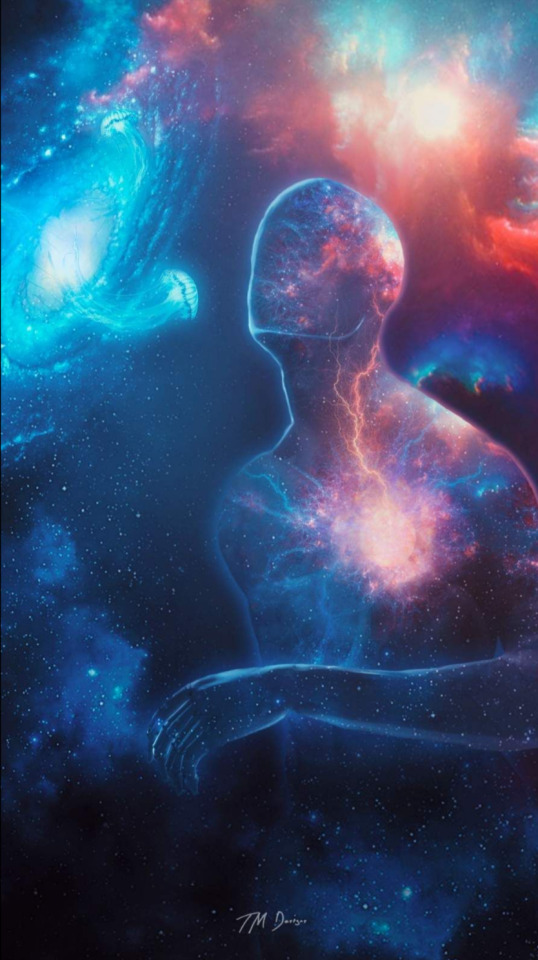
Coming together to encode or configure the Anthropos, Sophia and Christos act in a manner consistent with cosmic law, "for it is the will of the Originator not to allow anything to happen in the Pleroma apart from a syzygy" (A Valentinian Exposition 36.25-30). Syzygy is an odd Greek word used by astronomers to denote the conjunction of celestial bodies. The Originator wills that all activity in the Pleroma be accomplished by paired Aeons, coupled gods, but this is not a rigid rule, and it is not enforced. In the case of the Sophia-Christos syzygy that encodes the Anthropos, the will of the Originator is observed. Once it has been configured by the ritual dance of the coupled Aeons, the singulariry is ready to be projected into manifestation in the cosmos at large.
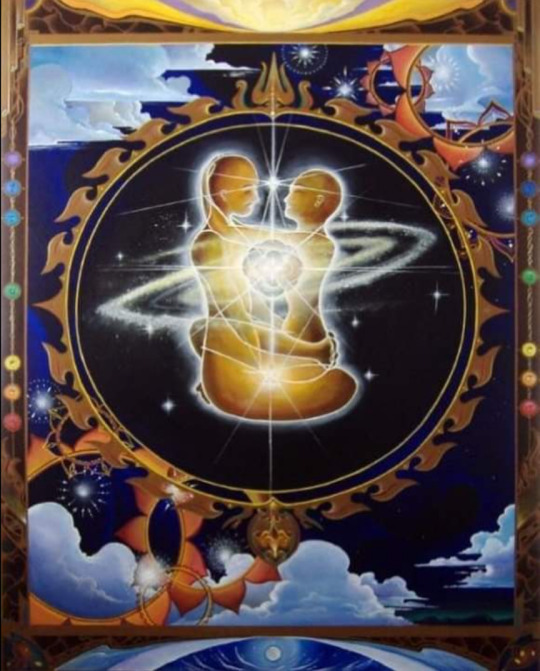
What next occurs in the Pleroma is a collective act, the collaboration of all the Aeons, not just Sophia and Christos acting as a distinct pair. In episode 3, the entire company of Pleromic gods unites in a choral dance to project the encoded singularity into manifesration. They seed it in the outer cosmos, the galactic limbs turning like a vast carousel around the Pleromic hub. The singularity nests in a nebular cloud. Although the language here is mythic, or mythopoetic, the description can be read as applying to the inner dynamics of the Galaxy. The myth clearly suggests astrophysical processes yet unknown ro science, but perhaps beginning to be glimpsed in plasma physics, complexity theory, and the new vision of emergence.
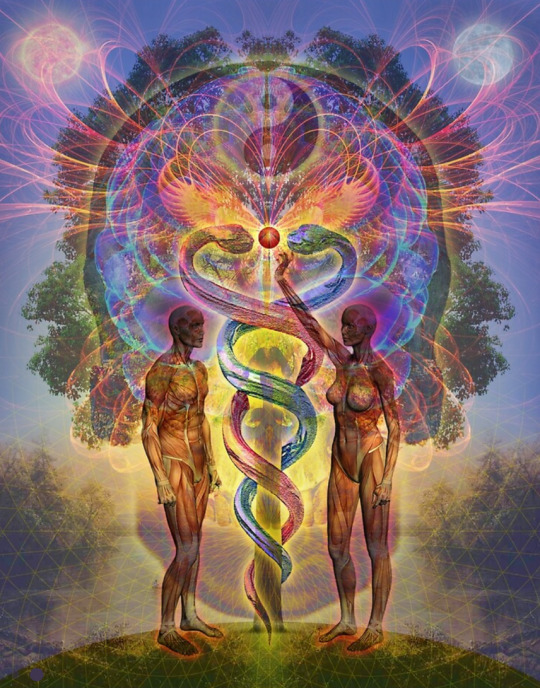
Pleroma means "fullness," "plenum," "plenitude." The galactic vortices are all variations of a chalice form, a flattened torus with a central core (the galactic bulge) and a surrounding disc (the spiral arms). The hub of a galaxy, its Pleroma, is counterbalanced by the flat carousel structure, the spinning armature, called the Kenoma, "deficiency," "formless realm." The Pleroma is a fullness, infinite potential that outpours itself into the realm of "deficiency," finite potential. In the Pleroma all possibility is complete, all is fulfilled, evolved ro its fullest potential. Pleromic gods like Sophia can only give of themselves, selflessly, without affecting what they emanate or imposing themselves upon the conditions they set up in the Kenoma. The selfless outpouring of the Pleromic gods is a key theme of Sophianic cosmology. It is also the model of human generosity.
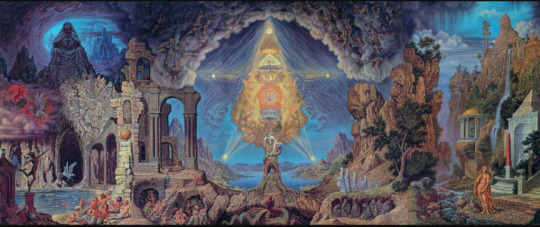
The Kenoma, the carousel armature of a galaxy, is the realm of chaos where finite, bounded potential develops. It is composed of dark elementary matter arrays (dema), atomic and subatomic fields, including organic elements, grains or spores of life. Suns are born in the galactic arms and planetary systems emerge there. On some of the planets organic life unfolds, but the origin of life cannot, it seems, be located on the planet where it arises. Nobel laureare Francis Crick, one of the discoverers of the structure of DNA, argues that, owing to its overwhelming complexity, life on Earth must have been seeded from elsewhere in the cosmos. Lynn Margulis, coauthor of the Gaia hypothesis, also accepts the possibility that microscopic life-forms (propagules) can migrate freely through interstellar space. The universe is a dusty place, and some of the dust is organic residue. That emergent life on planets in the carousel arms of a galaxy originates in the center of the galaxy, as described in episode 3, is not yet recognized by science. This theory will be unacceptable as long as scientists cannot imagine that the core of a galaxy is a vortex of superorganic forces, alive and aware, but this is the Gnostic vision of the Pleromas.
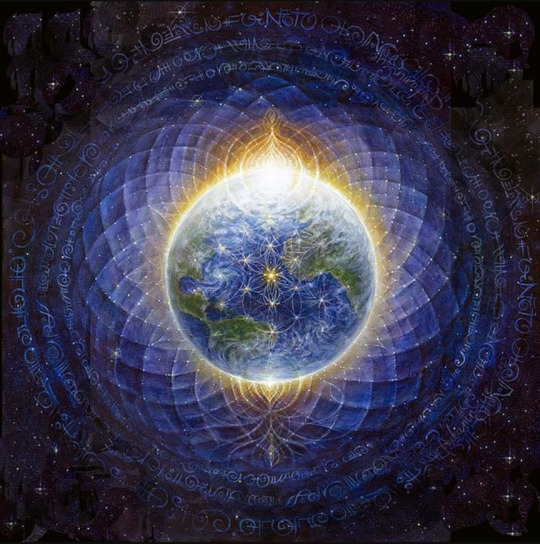
In Tantric cosmology, the composition of the Kenoma is called adrista, "residue." It is, as science tells us, stardust that remains from previous cycles of evolution, cycles without a beginning or end.
"Now the Eternity (which is absolute Truth) has no shadow outside it, for it is a limitless light where all is within and nothing is without. But at its exterior is shadow, which has been called darkness. From the darkness arises a force without form. This is the shadow realm of limitless chaos. From this realm, every kind of divine emanation emerges, including the world we inhabit, for whatever happens in chaos is previously implanted there by what produces it" (On the Origin of the World 98.20-30).
Here the language of the Mystery experience plays into the cosmological scenario. The galactic core is a spinning vortex of Organic Light, a radiant substance that might be compared to soft, luminous nougat. It casts no shadow. Darkness belongs to the exterior regions of the galactic mill wheel, the Kenoma. The residue of previous worlds is continually recycled and reprocessed in the massive armature of the spinning carousel. Whatever develops in the Kenoma was implanted there by Pleromic emanation-including humanity itself, or various strains of humanity, and other species.
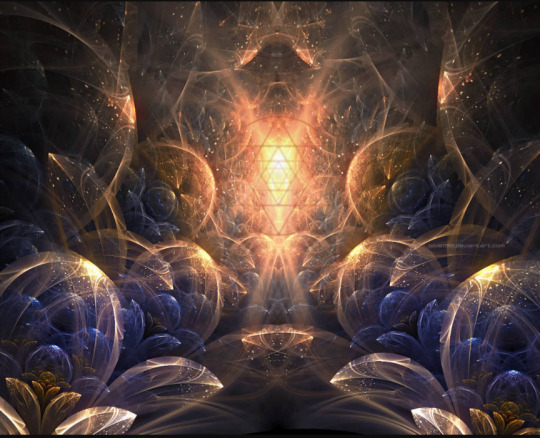
A striking parallel to the stalk of light in the Gnostic narrative occurs in the Japanese myth of creation where paired sky gods, or Kami, project a "Jewel-Sky-Spear" from the cosmic center into the waters of primordial chaos.' The image of cosmic fertilization in the galactic limbs occurs in Egyptian mythology where the sky goddess Nut, curved into an oval, carries the constellations of the zodiac encoded on her body. Cosmic embryonic imagery occurs in almost all high-culture cosmologies and universally in indigenous or "primitive" lore.

The text called On the Origin of the World (NHC II, 5) describes the boundary of the Pleromic core, called menix, hymen, stauros, or horos. Remaining in the core, Aeons can emanate into the arms, the realm of formless chaos, but they do not pass over into those regions. The opalescent stalk of light projected by the collectivity of Aeons may be compared to a klieg light shining through the wall of a white canvas tent. The beam of light passes through the walls, but the source of the beam remains inside the tent. Gnostics texts explain that these two primary conditions, Aeonic pairing and bounded emanation, are set by the Originator. They are cosmic laws but they are not enforced, so exceptions are possible.
Sophia is one of those exceptions.
#anthropos#gnosis#gnosticteachings#cosmology#johnlash#sophia#christos#aeon#plasmaphysics#magnetism#electricity#naghammadi#thegnostics#originstory#hierosgamos#divineunion#sacredmatrimony#sacredmarriage#divinefeminine#sacredmasculine#pleroma
20 notes
·
View notes
Text
The volume 22 of Children of the Whale is available on Mangasee which means ...
SPOILERS AHEAD !
At first I was so happy to see that everyone was alive ( even if most of our main characters are stuck ) and then I remembered the rest of our characters are idiots and are gonna want to sacrifice themselves for the others ( looking at YOU Orca especially) and then I was sad ...
BUT ! Before that, we had the confirmation Orca was alive and we had some slight flufff for everyone !

Look at them *-* so cuuute
Then we got to the fight inside Anthropos and you know what ? I wasn't that surprised to see that it's Liontari who fused with Anthropos instead of Skia or Chakuro ! Liontari would have never been able to adapt to a new peaceful and calm society like Itia, Kannavi or any of the other former soldiers of Orca ...
Though, my mood quickly got worst when I saw that the worst human ( Salinkari ) of the series was STILL alive !!! And then he died but got transformed into an eldritch horror to everyone displeasure and attacked Orca again !!!! Just DIE Salinkari ! It's all you deserve !
And sadly ... Orca had to fight again as he is a suicidal idiot without any self-preservation even though he is so injured and for a second I was so happy to see him being still able to fight !
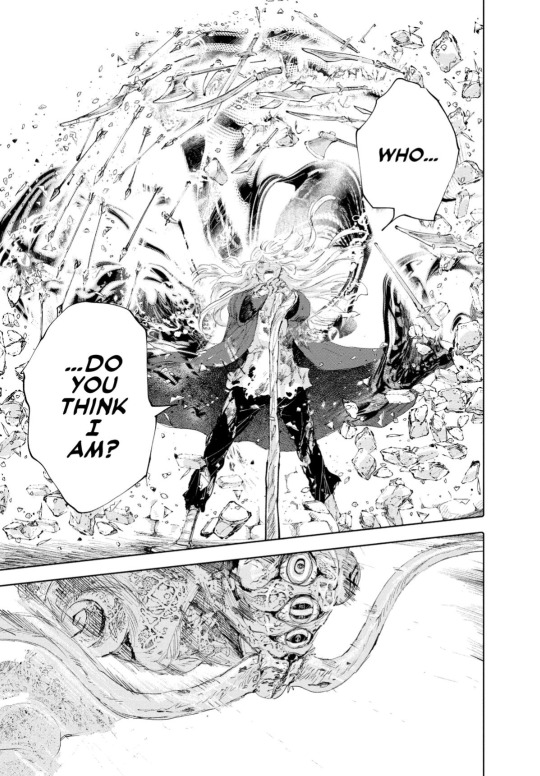
But then ...

I hope that he's still alive but I don't have too much hope seeing in which state he's in ...
And then the volume ended and then I got really sad :"(
I hope that in the next volume ( the last one ) everyone is able to survive and live happily even though I don't have much hope ...
#the children of the whale#children of the whales#children of the whale#cotw#volume 22#children of the whales volume 22#cotw volume 22#cotw Orca#cotw Salinkari#cotw Itia#cotw Skia#cotw Kannavi#cotw Liontari#Orca#Salinkari#Itia#Skia#Kannavi#Liontari#Anthropos#tw blood#tw injuries#tw angst#kujira no kora wa sajou ni utau
1 note
·
View note
Text
“MB: Si en la aiesthesis se trata de una liberación de los sentidos, se trata entonces de una liberación del “ojo” y del privilegio de la visión, propio de la estética moderna… ¿No?
Sí, así es exactamente. Una de las cosas de las que hoy han salido a la luz a partir de este debate es que la estética moderna-colonial ha estado no solamente pero en gran medida gobernada por la visión, por lo visual, por las percepciones visuales y esto obviamente está compaginado con un mundo en el que la representación visual se vuelve una forma central de poder. Entonces, podemos decir que la modernidad/colonialidad ha controlado la representación del mundo y es en este control de la percepción del mundo como imagen, dónde la visión, lo visual se vuelve central para la concepción de estética. Entonces, cuando comenzamos a hablar de aiesthesis decolonial surge la necesidad de acotar este dominio de la visión moderna. El dominio de la visibilidad y representación que se rige por la lógica del espectáculo viene a controlar nuestra percepción del mundo y nuestra relación con el mundo. Al acotar este dominio, lo que se logra o lo que comienza a emerger, desde mi perspectiva, es otra noción de temporalidad.
MB: Entonces, ¿quiere decir que la aiesthesis como liberación de los sentidos no solo desmantela la hegemonía de lo visual y de la representación como forma de acceder y de relacionarse con el mundo, sino también la comprensión del tiempo o de la temporalidad, supongo, también moderna?
MB: A propósito del rescate de otras formas de percibir el mundo, pienso en el trabajo de la artista Tanja Ostojic y al cual Mignolo se ha referido en distintas ocasiones. Del trabajo de la artista se comenta que no pone en escena un acontecimiento histórico puntual, sino un proceso social, político y cultural. ¿Es la aiesthesis decolonial, en ese sentido, una categoría política? Y de ser así, ¿qué es lo que busca “desmantelar”?
RV: En su dimensión política, por decirlo así, la aiesthesis tiene que ver con el rescate de lo que la modernidad/colonialidad ha silenciado y ha suprimido bajo el dominio de la representación moderna-colonial. El dominio de la representación moderna, eurocentrada del mundo ha conllevado la supresión y el silenciamiento de otras formas de comprensión del mundo, otras formas de haber vivido en el mundo, habitado el mundo, de hacer mundo. Como bien sabemos el movimiento de domino de la modernidad sobre lo real conlleva el movimiento de la colonialidad, es decir el movimiento de supresión de otras realidades. Entonces, la dimensión política y propiamente decolonial está en el rescatar estas formas de habitar el mundo, estas memorias que han sido silenciadas o que están siendo invisibilizadas bajo el control de la representación y de la experiencia de lo real de la modernidad eurocentrada. Yo creo que esa es la tarea más profunda de la aiesthesis decolonial: traer a nuestra experiencia no solo procesos sino formas de relación al mundo que han sido suprimidas, denigradas, desdeñadas.
Lo que vemos con varios de los y las artistas que han participado en los encuentros y muchos otros artistas que no necesariamente se identifican como artistas decoloniales pero que podemos entender dentro de este contexto, es como ellos, en vez de estar buscando la innovación y por tanto seguir el culto a la novedad de la modernidad y del arte contemporáneo, están buscando redimir la pluralidad de experiencias e historias, los otros mundos que están suprimidos o silenciados bajo el yugo de la modernidad/colonialidad. La aesthesis decolonial hace posible que emerjan las otras formas de relación al mundo que han estado suprimidas bajo el predominio de la visión y de la representación de la estética moderna.”
Entrevista de Miriam Barrera a Rolando Vázquez
1 note
·
View note
Text
Aluna transando com seu professor de sinuca
river casino pittsburgh jobs
Mini chechi tight ass licking
Mulatto babe with a big ass fucked hard
Teen blonde rides cock and ends with cum in mouth
Hot Milf India Summer fucks and sucks young cock at Naughty America
LICENSED TO BLOW - Jett Black Helps Sahara Knite Double Fuck
chapeuzinho vermelho levando gozada dentro
Cuties shag fellows anal with monster strapons and squirt spunk
Novinha bunda gigante cavalgando no boy delicia Amador Big Ass
#ramshorns#marquito#superimpend#Miki#ornithomancy#subideas#beckoned#Jeritah#conciseness#NEBS#Anthropos#Codium#allotheism#ill-noised#foll.#loanmonger#ill-treatment#syngamy#ancylopod#inframercurial
0 notes
Audio
GoneWest - Anthropos Festival 2022 by GoneWest
My set from the Ash stage Friday morning at Anthropos Festival 2022 Hertfordshire UK. Tracklist: KAS:ST - The Hymn Of Fallen Dreams (Original Mix) Soul Button - Silhouettes feat. Violin Girl (Original Mix) Zankee Gulati - Visionary (Original Mix) Felix Raphael feat. Ghenwa Nemnom - Miracle (M.O.S. Remix) Chiari - Midnight Express (Original Mix) Kamilo Sanclemente - From The Sky (Original Mix) MPathy & Haffenfold - Erlin (Original Mix) Serious Dancers - Qallin (Original Mix) Innellea - Transhumanism Project (3-3) Soul Button & Grammik - Junction (Original Mix) Nick Devon & Haffenfold - Spectra (Original Mix) Nick Devon - Visionnaire (Original Mix) John Monkman and Pete Tong - Phoenix (Original Mix) Dusky - Justified (Original Mix) Zara Feat. Djivan Gasparyan - Dle Yaman (Rick Pier O'Neil Unreleased Mix) Da Fresh - Sahara (Original Mix) JOBE - Orcus (Soul Button Remix) Quivver - Funkily (Losless Remix) Dope (PT) - Hunger (Original Mix) Guy J - Lamur (Alex Efe & Diego Berrondo Bootleg) Zankee Gulati - Fika (Original Mix) Hot Since 82 & Joe T Vannelli feat. Csilla - The End (Original Mix) Pole Folder - Jaipur (Original Mix) Florian Rietze - Treibholz (Soul Button Remix) Ruben Karapetyan - Gignesthai (Stan Kolev Remix) P.Young - Who I Am (Original Mix) Salbah - Migaloo (Original Mix) Serious Dancers - Nefertiti (Original Mix) Gorje Hewek featuring Lost Desert - Aya (Original Mix) https://ift.tt/mSLKdn0 https://ift.tt/als9yuG
0 notes
Text
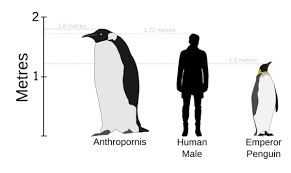
what a name
#anyone know what 'pornis' means here bc the only greek/latin root i can find is like 'harlot' and im pretty sure this penguin is#not named 'man harlot'#edit: lol literally 'anthroPO' 'ornis' ie man-bird
487 notes
·
View notes
Note
A question for Asteri—you're a pretty well-established linguist. What would you say was your favorite language to work with thus far?







#((I made up the term ‘‘teralogy’’ to be monsters’ version of anthropology#since there’s no reason they’d use ‘‘anthropology’’ as ‘‘anthropo-’’ refers to humans specifically.#teratology is… already a real term that means something different… so this is what I came up with.))#ask asteri#asteri#gaster#alphys
9 notes
·
View notes
Text

I was spending a lot of time changing my outfit around and... not sure if this is sweet or a diss lol
#elder scrolls online#necrom#sharp-as-night#sharp as night#the elder scrolls#eso#i know im obsessed#i wish i could draw anthropo...anthro characters#id totally draw them
29 notes
·
View notes
Note
Draw them !!! We can put off stuff for this < — horrible influence
-Tostoa

VERY WELL,,,, HUMAN ENGINEER AND BETAZOID/ROMULAN COMMANDER,,,,
#i might change human engineer a bit because i dont want him coming off too much like geordi sdfghj#hybrid cast#<- gonna be my tag for art of them!! :D#my art#my ocs#answered#doodles#star trek oc#guy anthropo#libitina vovik
15 notes
·
View notes
Text
Here they are !!!

I had so much fun drawing this :D
@professionallydeadinside
#hybrid cast#Libitina Vavik#Bel Colwot#Minye Oporia#Guy Anthropo#Jagre Signe#Frelvar#Emivo Dalrill#Mirou Zh’ishraasriss#star trek oc#star trek ocs#star trek
16 notes
·
View notes
Text
Gnome-Spotting: Observing an invisible culture
I often enjoy going gnome-spotting for the periphery benefits more than for the primary goal. This is to say, I go gnome-spotting with the full understanding I will be unlikely to see a gnome. They're tiny and masters of disguise to boot, after all.
But that's fine. If I went my whole life never having seen a gnome that would be fine. Gnomology is not wholly about observation (that is, observation in a physical, flesh and blood sense).

I often talk about the physicality of gnomes, of them choosing to take form. And I do think this can mean in a literal sense, of course, but I do find that to be a narrow view, especially when thinking about a people who are ephemeral.
They take form, yes, but does that have to mean a form you can reach out and touch? Not necessarily. A form is just a shape. A gnome is real and has a shape in the same way that a square is real and has a shape. A square is a square becuase it has 4 equal sides. A gnome is a gnome because it embodies gnomish qualities. Can you encounter this gnome-form physically? Yes, but it's unlikely and it's also unnecessary. Not being able to come into contact with gnomes doesn't make them less real, same as how a square can exist conceptually without having a physical reality.
So, why go gnome-spotting if the chances of seeing a gnome are low (though never impossible)? This brings me back to the periphery benefits to gnome-spotting I mentioned at the outset.
Gnomes are spirits of the earth. This manifests in many forms but most often they are depicted as caretakers and tenders to the earth, as workers. Miners in times of old and in more recent years, as gardeners. This is all less about what gnomes look like and more about what they do.
And what gnomes do is thrive.
They are professionals. They are skilled labourers and talented hobbyists. When gnomes work the earth, they do so with vision and vigour. Where gnomes dwell, nature thrives. They are, in a sense, a manifestation of nature emphatically self-actualising. The earth generating it's own caretakers in an act of anthropo-geographical self-love.
And so when I go gnome-spotting, those periphery benefits I speak of are taking in the natural splendour of the world around me. I know, I know, this is something I can do without any gnome-orientated context. I was drawn to nature before gnome-studies, after all. But I find that the gnomological context helps me to observe nature in a way that goes beyond the justified enjoyment of it's beauty.
At least personally, it helps me appreciate the grand scope of it all, the interlocking interdependencies between all the many plants and rocks and animals and fungi spread across the landscape. It helps me marvel at the great green ordered chaos that the natural world has built itself into over the last few hundred million years. It encourages me to observe and think about how the land might look if I was even smaller than a human already is in comparison to it all.
To me, these observations are also a valid observation upon gnomish culture, at least from a broader and more ephemeral perspective. To view gnome culture through the literalist perspective that they are simply little fellows who live under mushrooms (a delightful picture, I grant you) is, to my mind, a narrow view. Yes, they are these little fellows, but they are also a great deal more besides.
We must take care to observe what is and also what is not visible.
#gnomes#gnomeposting#gnome posting#gnomology#the bright green#nature#nature appreciation#niche hobbies#without wishing to pat myself on the back too hard the phrase#anthropo-geographical self-love#is one of my finer explanations
4 notes
·
View notes
Text
Fred Wilson en entrevista con Leslie King-Hammond, sobre sentirse extranjero (como afroamericano) en su propio país:
“There I was feeling bad about myself because of how I was being treated, and meanwhile everybody’s acting like there’s no problem. In the museum, you’re in this environment you’re supposed to understand and you’re supposed to feel good about. All of these “supposed to’s” -and the artwork’s all there, but there’s all this stuff that’s not being talked about as it relates to the real world.”
El “supposed to” (lo esperable, lo que debería ser) corresponde a la retórica de la modernidad, la retórica que crea las expectativas de lo que debe ser. Son estas expectativas naturalizadas las que operan en la colonialidad del ser, del sentir (aesthesis) y del saber (epistemología). “Como debería ser” es el horizonte trazado por la fe puesta en la marcha hacia adelante; “como debería ser” es precisamente el horizonte de la colonialidad del ser y del sentir. Wilson apunta la barra “/”, que divide y une modernidad/colonialidad. “Denial” es la palabra que usa Wilson para referirse a estos fenómenos.
Opresión y negación son dos aspectos de la lógica de la colonialidad. El primero opera en la acción de un individuo sobre otro, en relaciones desiguales de poder. El segundo lo hace sobre los individuos, en la manera en que niegan lo que en el fondo saben. Los procesos decoloniales consisten en sacar a ambos de sus lugares reprimidos, mostrando también las características imperiales de la “negación”. La opresión y la negación no se limitan al sujeto europeo moderno —el trabajador asalariado de Marx o el sujeto moderno europeo que analizaba Freud. Operan en la opresión racial/colonial, y también en la negación de los sujetos imperiales y coloniales: el negro que quiere ser blanco, y el amo que se niega a ver que la opresión y explotación de otro ser humano es éticamente reprobable y humanamente inaceptable. Por estas y otras razones, la obra de Fred Wilson es un constante proceso de decolonización de la aesthesis, de las formas de sentir y de saber (teorizar) lo que sentimos.”
0 notes
Text
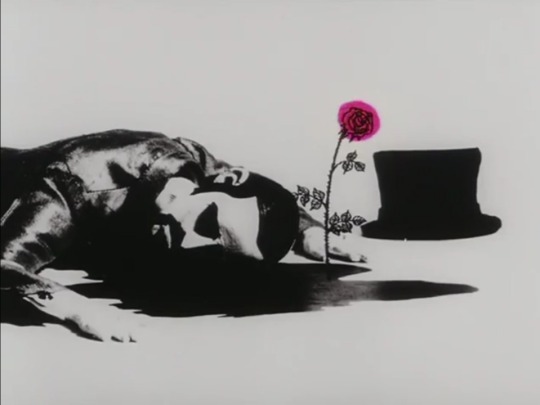





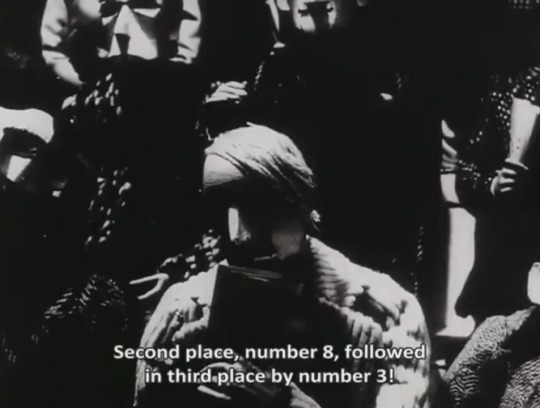
An Anthropo-Cynical Farce by Kihachiro Kawamoto, 1970
5 notes
·
View notes
Text
anyway i am never again bringing an actual, printed book to a fair; now it's only the ereader and if someone asks me what i'm reading i will lie and say oh, a romance novel. i may have to read some so i can fib credibly. i'm curious to see if people get annoying about that too.
#at this rate i'll write a motherfucking anthropo study#(it was so much more peaceful when i brought the embroidery)#and like. i joke but there really is a study to make. fom the conspiracy people#to those clients whose value system has no room for a manual worker doing an intellectualism in front of their salad#personal
3 notes
·
View notes
Text
why does the scar on my finger hurt randomly for the first time in like a year what unspeakable evil is about to descend upon me
#funny#if you think I'm referencing harry potter you're wrong#I'm referencing lord of the rings#and the archives of anthropos#which both far predate HP#am I about to get attacked by a nazgul or a goblin prince?#who knows I sure hope not
3 notes
·
View notes